10 Flowers You Can Plant During the Winter
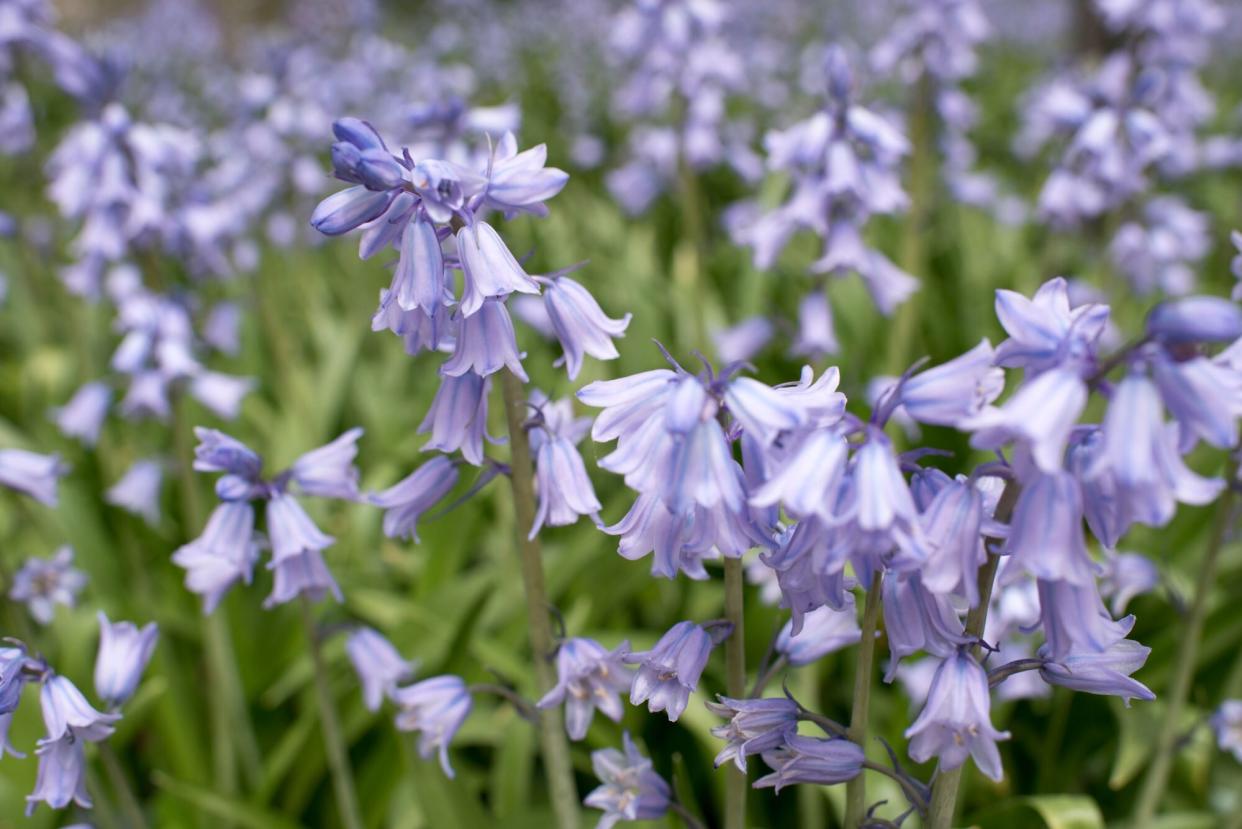
aimintang/Getty Images
TABLE OF CONTENTS
On This Page
Violas and Pansies
Forsythia
Bachelor’s Buttons
Decorative Kale
Delphinium
Primrose
Poppies
Calendula
Bluebells
Snapdragons
Vegetables
Despite what some purple-thumbed folks might think, there are no breaks for gardeners, not even in winter. If you live in the South, particularly in the warmer corners, even in December and January there is still time to plant. And if you live in a colder climate or just like to get a jumpstart on things, winter is for planning for the garden next year. That includes starting your summer annuals indoors for planting outside after your area's last frost and planting seeds in preparation for a bountiful spring and summer.
Before you begin planting in winter, check out the USDA Plant Hardiness Zones Map to ensure you're choosing the right plants for your location. Most of the South stretches from the 7b to 9a zone, making it easy to plant and plan all winter long.
Here are the flowers and plants you can put in the ground in winter:
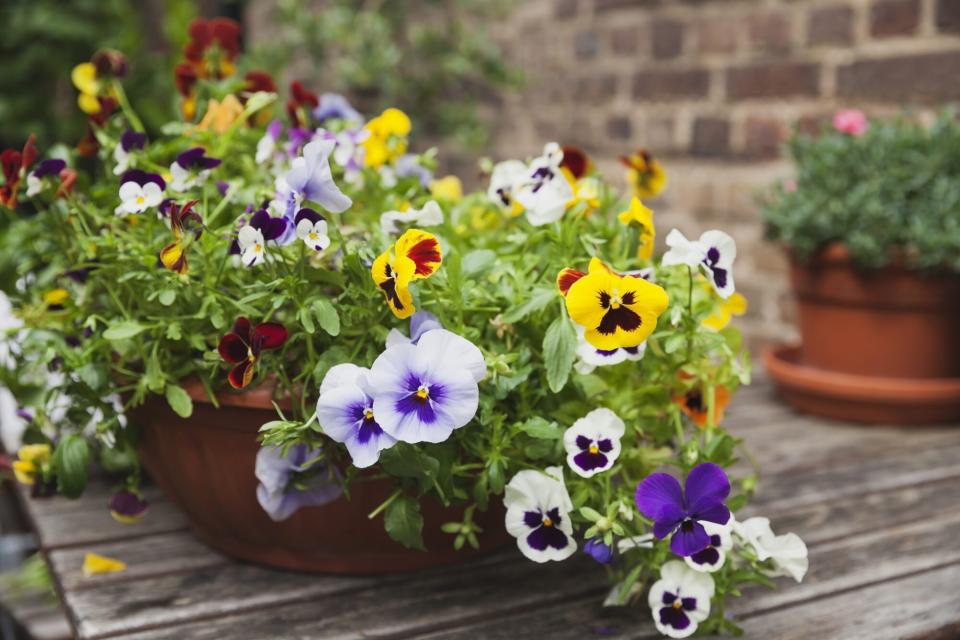
Westend61 / Getty Images
Violas and Pansies
These hardy little flowers not only have gorgeous blooms but can survive almost anything winter has to dish out. Violas and pansies grow best in partial shade but need a minimum of four hours of sunlight a day. Plant them in loose, slightly acid pH (6.0 to 6.2), and give them water soluble, liquid fertilizer every two to three weeks. Water them regularly, and make sure the soil has good drainage (i.e. planting in a pot with drainage holes or making sure the ground's soil has adequate drainage before planting.) Cut back leggy or older pansies for growth.
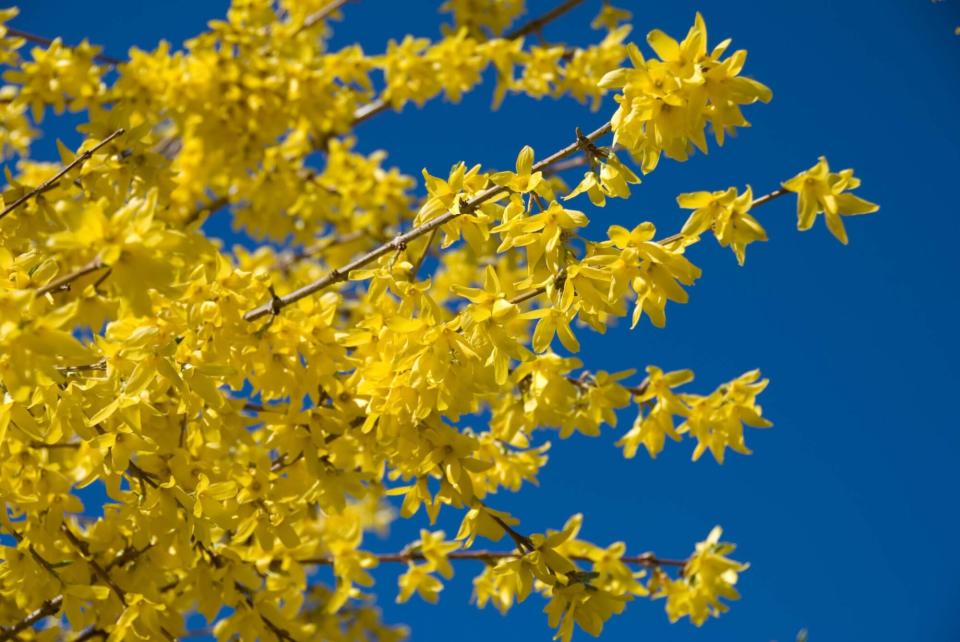
Getty Images
Forsythia
Classic border forsythia, also called "yellow bells" due to the shape and color of its blooms, can be planted in February in much of the South and will bloom throughout summer. Forsythia needs at least six hours of direct sun each day for optimal flower growth. They prefer loose, well-draining soil, and do not have a preference for pH level. When first planting forsythia, your should water regularly until established. Then after established, you should only water if there has been a long time without rain. You shouldn't fertilize your forsythia until a year after planting.
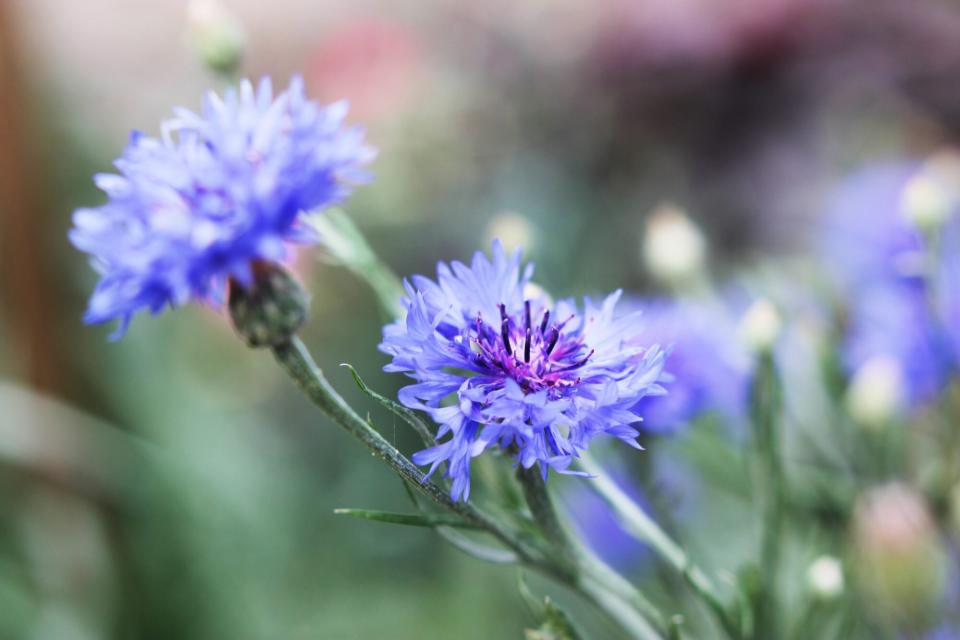
Lisa Schaetzle/Getty Images
Bachelor's Buttons
These cute and bright blue wildflowers, also known as cornflowers or blue bottles, get their unique nickname from how they were used. The flowers were placed in a buttonhole of a suit or shirt before a fellow would go courting in the Victorian era. Plant your bachelor's buttons seeds towards the tail end of winter for gorgeous blue blooms from early summer onwards. These flowers enjoy full sun and grow best in well-drained soil. The vibrant wildflower is pretty drought tolerant but does prefer to be watered fairly regularly.
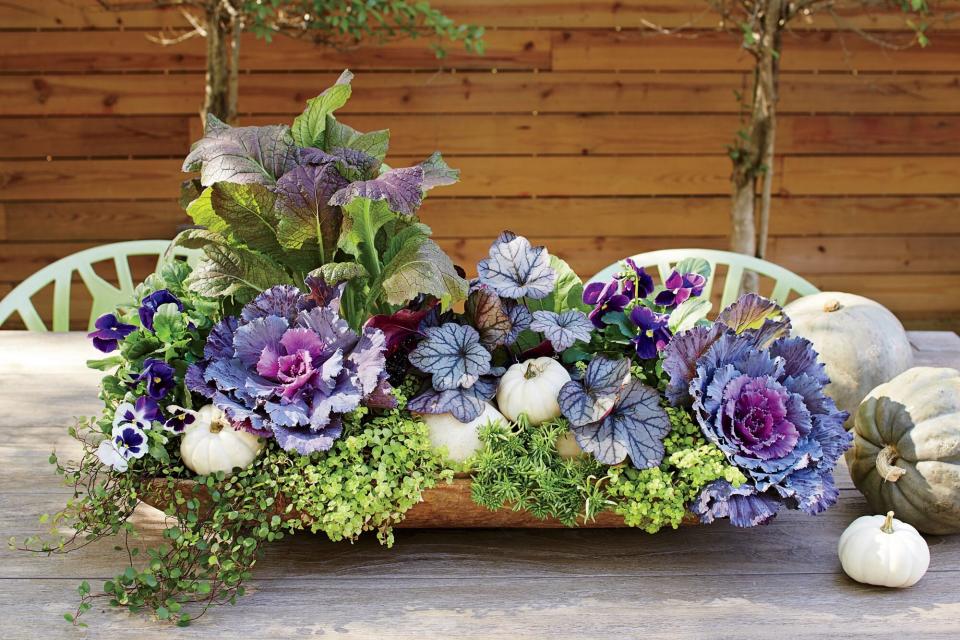
Laurey W. Glenn; Styling: Buffy Hargett Miller
Decorative Kale
Ornamental Kale is related to edible kale but isn't for your kale salad. Instead, it has brilliant hues and a love of cold temperatures that makes it an ideal addition to a winter garden. Ornamental kale needs a minimum of four hours of sunlight each day for good growth. It needs to be planted in well-draining soil. If you are looking to plant yours in a container, look for pots that range from four to eight inches. Try planting them with pansies, violas, and snapdragons for a gorgeous container you'll be admiring all season.
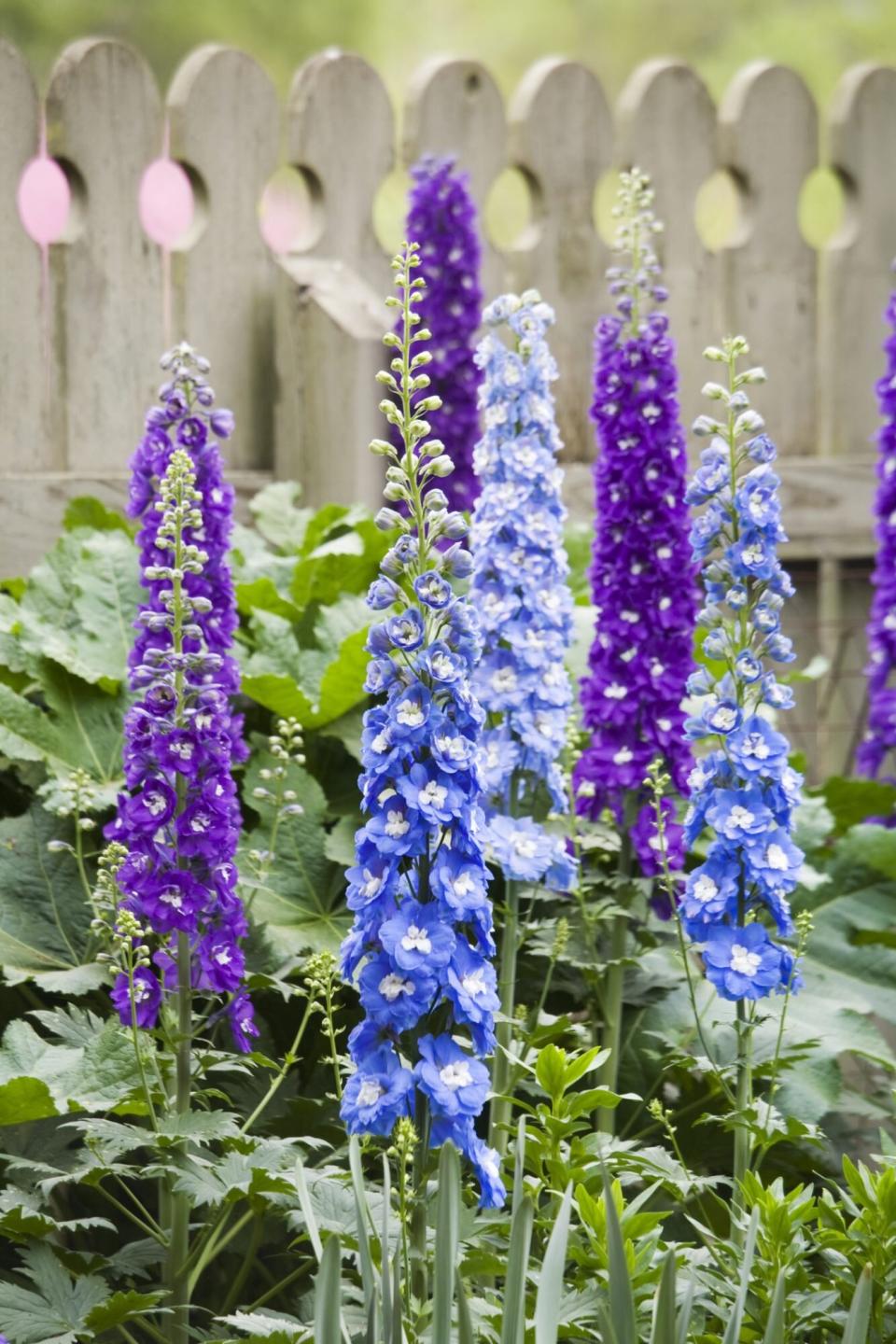
Getty Images
Delphinium
Put this long, tall plant in the ground in late winter and enjoy its elegant, lanky stalks all summer long. Delphiniums, also known as larkspur, thrive with regular watering and fertilization, and in full sun. Make sure the soil drains well, as this tall plant does not do well in soggy soil. All in all, these vibrant florals can grow up to six feet tall, and will surely be the centerpiece of your flower garden, while adding a bit of whimsy to your landscape.
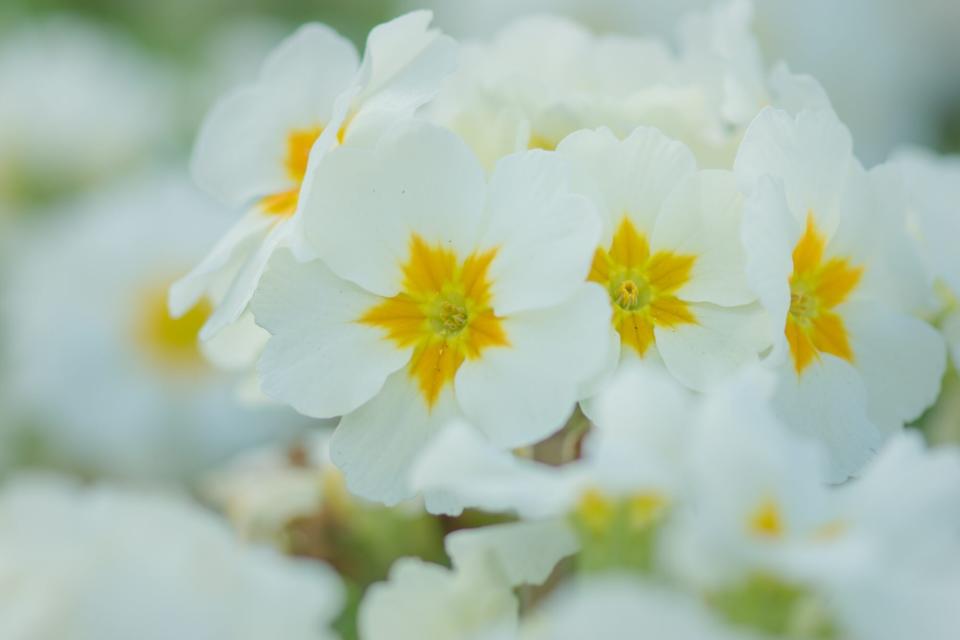
ImageJournal-Photography/Getty Images While many species of primrose bloom in spring and early summer, several types bloom in winter. Often called polyanthus primrose or English primrose, blooms from winter to spring and bears bright, showy, five-petaled flowers in thick, romantic clusters. The hues of these flowers vary among the species and selections. At the base of the English primrose plant, there occur clumps of foliage that resemble leaves of romaine lettuce. These plants thrive in pots and when planted in masses. Primrose requires a cool, humid climate and soil that's both moist and rich. According to The Southern Living Garden Book, many species can grow as perennials but are often treated as cold-season annuals.
Primrose
Few plants beat the primrose for winter color, and they are extremely cold-hardy. Pick up a few in February and plant them in the ground or in containers where they do well outdoors. They thrive in partial shade and need regular watering. They prefer the soil to be well-draining, and slightly more acidic. Use half-strength fertilizer when regularly feeding these pretty florals.
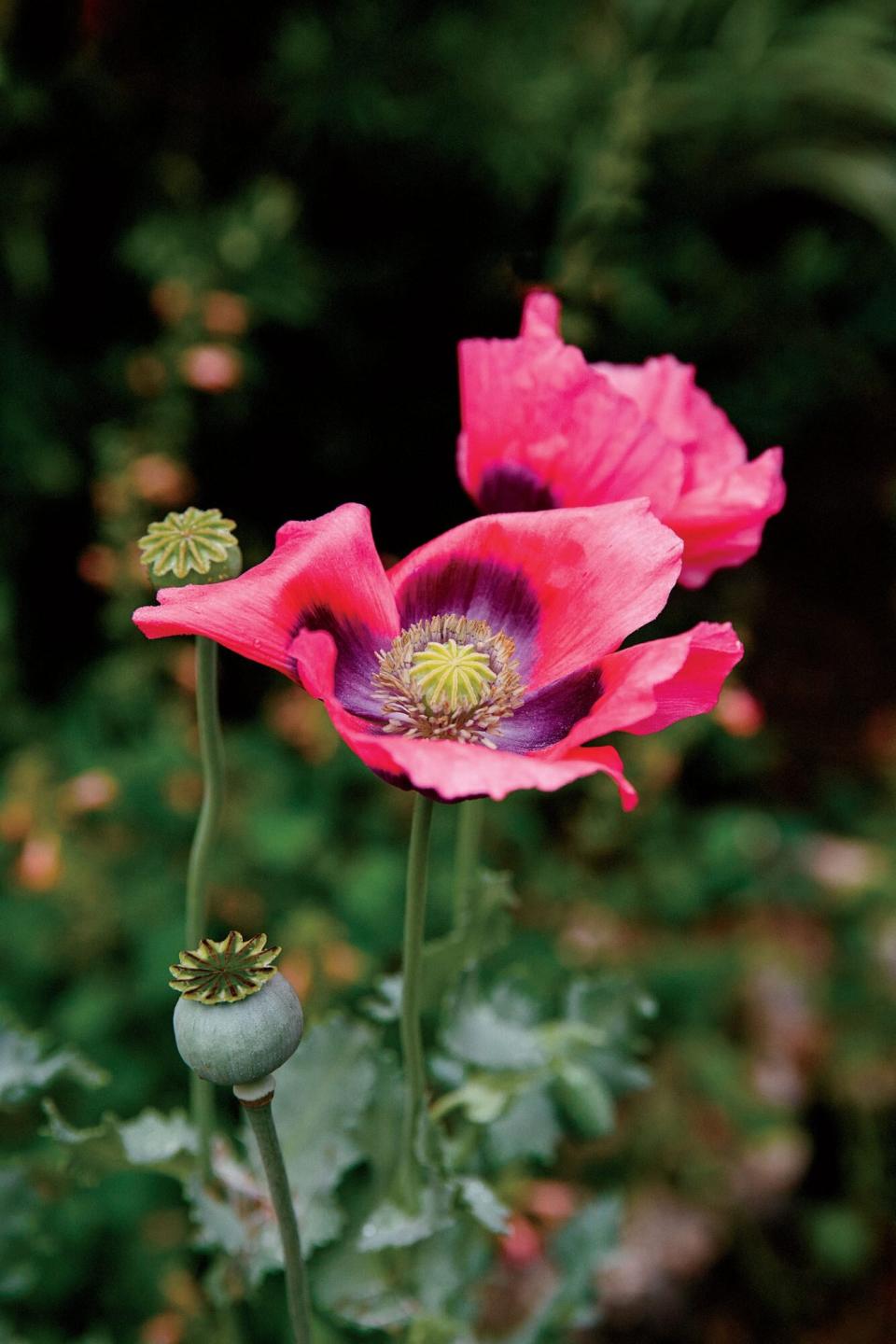
Wynn Myers; Styling: Sara Oswalt/Sisterbrother MGMT Oriental poppies are warm-weather stunners showcasing cheery blooms in bright colors. They're tough enough to withstand the heat, and they add instant whimsy to any flowerbed.
Poppies
Poppies are those rare plants that do best when exposed to cold, so sow their seeds outdoors in the fall or winter and wait for their sunny blooms to brighten the garden. They love full sun, need regular watering, and require well-draining soil. Feed them lightly until they are established. Want to cut them for an arrangement? We recommend searing the cut stem ends in a flame before putting them in water.
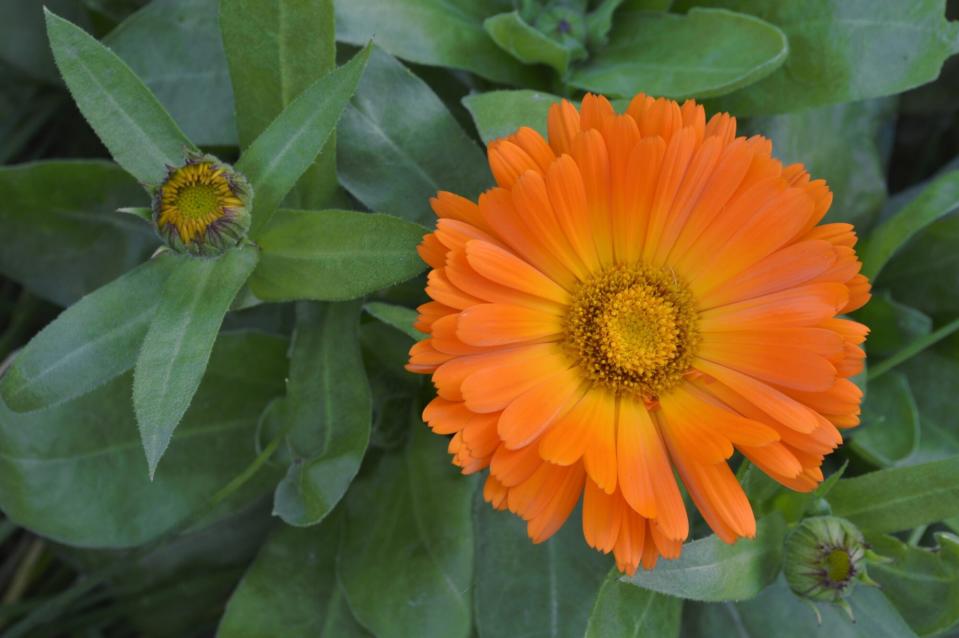
Getty Images
Calendula
Fill your garden with these cheerful yellow and orange blossoms and you'll have a plant that is beautiful, edible, and attracts those all-important pollinators. Also known as pot marigolds, calendulas grow best in full sun, though they don't like excessive heat and may need some partial shade in the hottest months of summer. The cheery blooms should be watered frequently until established, and after that, should only be occasionally watered. They grow best in rich, well-draining soil. While they are hardy in the colder months, they will not withstand a hard freeze and should be covered with a frost blanket overnight if you suspect a freeze. You can also add three to four inches of mulch for protection.

aimintang/Getty Images
Bluebells
Scilla, which is more commonly known as bluebells, are the perfect, durable winter bloom that provides a meditative splash of color to a winter garden. Growing up to a foot tall, these striking florals thrive in partial sun, and in soil that is well-draining, rich, and slightly acidic. Be sure to water them regularly, as they grow quite well in moist soil. Be weary though of overwatering, as this can cause root rot.
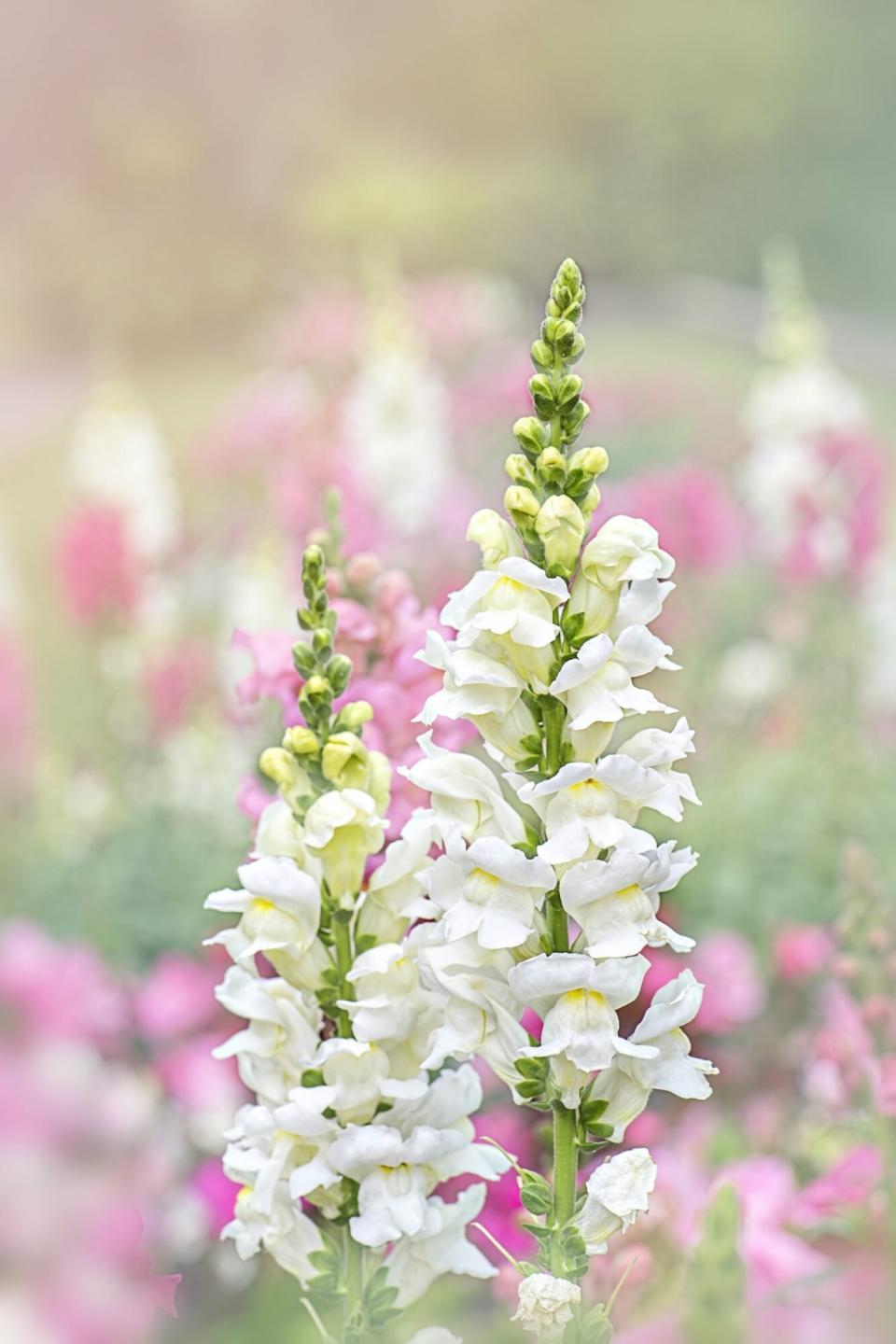
Getty Images
Snapdragons
Whether from starts or seeds, snapdragons can tolerate a bit of winter chill, growing up (and up) to add some vertical heft and gorgeous color to a spring garden. The gorgeous vertical blooms need full sun to partial shade, a neutral pH and well-draining soil, and regular watering (i.e. one inch of water per week in times of no rainfall). Deadheading your snapdragons regularly with promote the best growth.
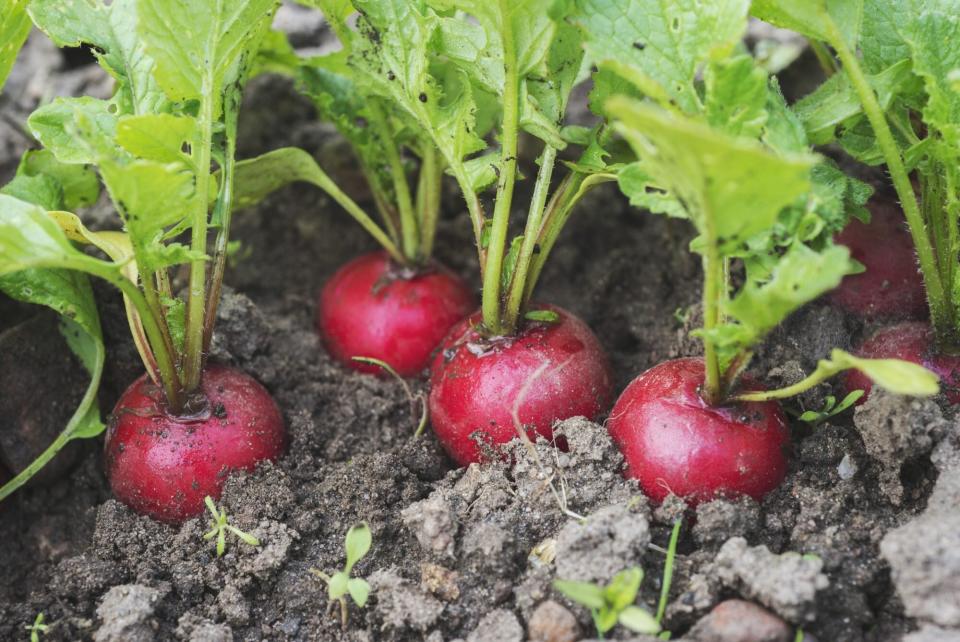
Hakan Jansson/Getty Images
Vegetables
Okay, these aren't flowers, but you can sow seeds for vegetables, like salad greens, radishes, carrots, onions, Swiss chard, English peas, and kale in winter.

